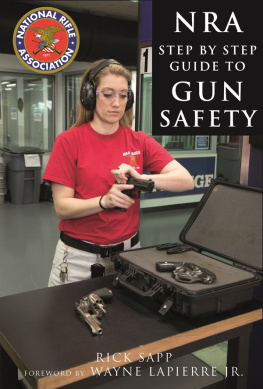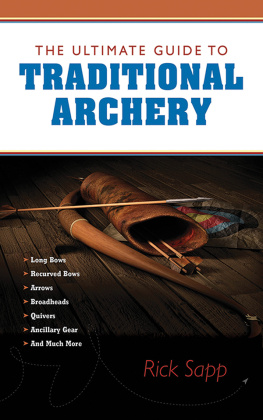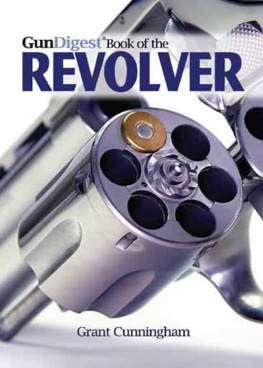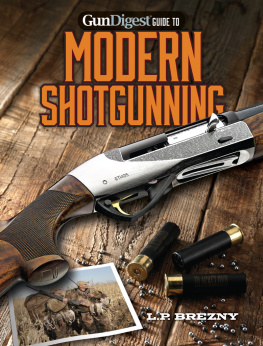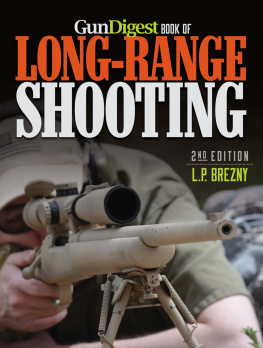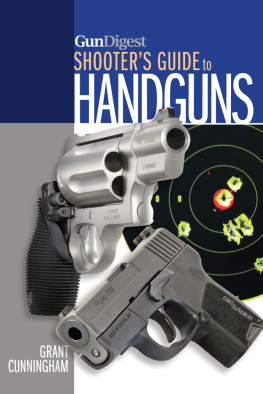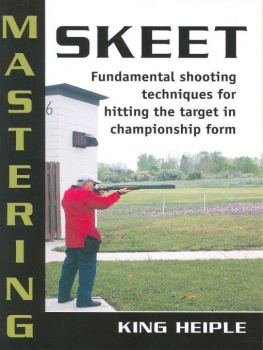Thank you for purchasing this Gun Digest eBook.
Sign up for our newsletter and receive special offers, access to free content, and information on the latest new releases and must-have firearms resources! Plus, receive a coupon code to use on your first purchase from GunDigestStore.com for signing up.
or visit us online to sign up at
http://gundigest.com/ebook-promo
2009 Krause Publications, Inc., a subsidiary of F+W Media, Inc.
Published by
Gun Digest Books
An imprint of F+W Media, Inc.
700 East State Street Iola, WI 54990-0001
715-445-2214 888-457-2873
www.gundigestbooks.com

Our toll-free number to place an order or obtain
a free catalog is (800) 258-0929.
All rights reserved. No portion of this publication may be reproduced or transmitted in any form or by any means, electronic or mechanical, including photocopy, recording, or any information storage and retrieval system, without permission in writing from the publisher, except by a reviewer who may quote brief passages in a critical article or review to be printed in a magazine or newspaper, or electronically transmitted on radio, television, or the Internet.
Library of Congress Control Number: 2009923229
ISBN 13-digit: 978-1-44020-388-6
ISBN 10-digit: 1-44020-388-1
eISBN: 978-1-44022-432-4
Designed by Kara Grundman
Edited by Corrina Peterson
Printed in the United States of America
ABOUT THE AUTHOR
Rick Sapp was born in Indiana, but grew up in Florida. He attended a military academy before dropping out and enlisting in the army. Eventually completing a degree or two in anthropology, he collapsed into bad company with characters employed by the U.S. Fish & Wildlife Service. They patiently taught him something of hunting, fishing and shooting. Rick has worked for newspapers and magazines; opened and closed his own businesses; and all the while he read, wrote and dreamed. The opportunity to write about the outdoorsthe skills and products, the community and, sometimes, the dramais the culmination of those dreams.
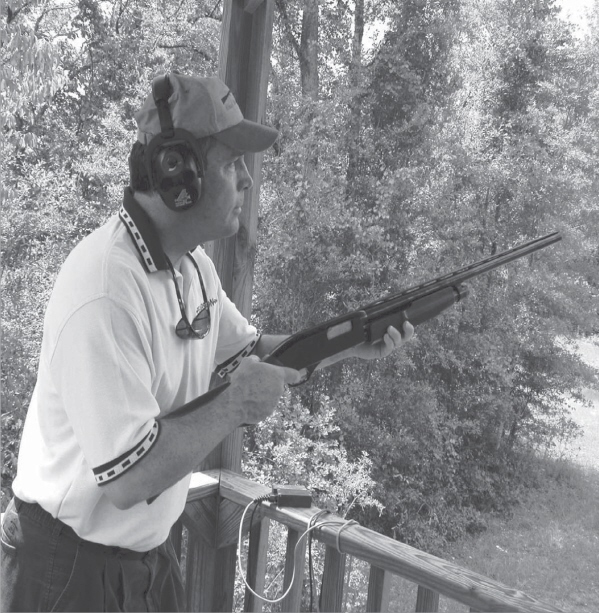
Author Rick Sapp during a light day of shooting near the Rhino Gun Case factory in Williston, Florida.
TABLE OF CONTENTS
SAVING THE FAMILY JEWELS
Pulling the trigger of a shotgun is a thrill and perhaps it is a privilege, as well. In the field, something replenishable and edible may die, be harvested a pheasant, a grouse while at the range, a clay target may be pulverized.
Shooting is exciting, and shooting a shotgun ought to be a lifetime hobby with a lifetime of exposure to learning opportunities new shotgun games, new gear, new aspects of the hobby such as loading ones own ammo friends who share the passion, and opportunities to serve and to teach.
So it is altogether proper to begin a book about something as exciting as blowing things up in this case, using gunpowder to deadly effect to kill clay pigeons with a chapter about saving the family jewels the real jewels, that is, ones vision and hearing.
This is not a chapter about safety, the most boring pages in any book, the most slept-through session of any hunter education class. Just put me to sleep now.
This is a chapter about looking at pretty girls in bikinis on the beach. This is a chapter about hearing your boyfriend whisper something sweet and exciting in your ear. This is a chapter about hearing the baby monitor in the middle of the night or noticing the child staggering toward the campfire in time to react. This is a chapter about preserving your family jewels, your eyesight and hearing, and it must be the beginning of any shooting odyssey because, over the course of a lifetime, your eyes and ears will offer you the possibility of pleasures that meet or exceed your wildest dreams.
A final reason to begin a trap, skeet and sporting clays book with hearing and vision protection is that by taking care of these health issues and they are health issues for, barring something catastrophic like a burst eardrum or an exploding barrel, hearing loss especially is subtle, progressive and irreversible you will become a better shooter.
Stand behind any shooting line and watch people as they pull the trigger, or watch slow motion video. As the shell fires, everyone flinches. Everyone from first time shooters to AAA Trap Masters flinches. Flinching destroys follow-through and interrupts concentration, especially shooting doubles. In its extreme form, flinching can lead to an inability to pull the trigger; a condition sometimes referred to as target panic.
The difference between the shooter who reacts to a shot so much that it is difficult to get off a follow-up string and the shooter who understands, and accepts, blast and recoil is, of course, experience. Study those folks at the shooting line carefully, though, and you will see that step one in controlling a flinch, in learning proper shooting form, is to protect ones ears and eyes. Thus, our first topic.
Ears First
Measuring Sound
Humans are counters. We teach numbers to infants and, when we are feeling particularly smart, we teach our animals as well: Esmeralda, the gypsy girl in Victor Hugos 1831 Hunchback of Notre Dame fascinates fellow Parisians when her goat taps out the month and hour of the day. Today, dogs and parrots star on Animal Planets popular Pet Star television show responding to trainers voice commands.

Remarkably, a very inexpensive set of ear plugs providea high level of protection from the blast of a shotgun. Combine these with a set of ear muffs with noise-interruptioncircuitry and one has the best hearingprotection possible while shooting.
Thus, in dealing with the world, we attempt to quantify what we see and hear. For hearing, for understanding the power or intensity of waves of sound entering our ears, we commonly say something is loud or soft; or, as if it made us more precise, we use a special kind of counting unit called a decibel (dB).
The threshold of hearing is conveniently set at 0 dB and we measure upward from that point:
40-60 dB: the shooting instructor (one meter away)
80 dB: a spouse shouting to Shut up! (two meters away)
100 dB: a power lawnmower (one meter away)
134 dB: the threshold of pain
165 dB: a shotgun blast
180 dB: a rocket launch
And yet, the decibel measures only a moment in time, and this simple measure of a sound does not tell the entire story. A decibel is a logarithmic expression to the base 10, meaning that 100, for instance, is not twice as intense as 50, its five times as intense.
A single crack of a .22 is not so disturbing, even at 140 dB, but prolonged exposure is entirely different. Riding a motorcycle across the country is an adventure, but a week of unrelenting exposure to 90 dB is over the top. The men who guide your airliner into its terminal docking station wear hearing protection not because the whine of a single jet engine, even an engine in subdued taxi mode, reaches the threshold of pain, but because they bring dozens of airliners to the terminal each day.


